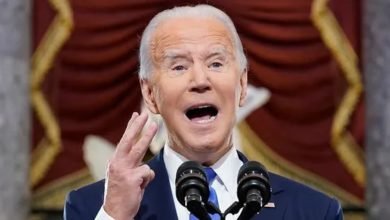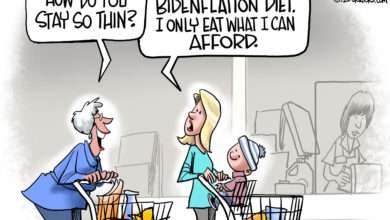Latest Data Shows Stagflation Is Coming
Annual growth slowed to 1.6% in the first quarter. The April CPI number will raise the annual CPI to nearly 4%.
The latest available data indicates that economic growth is slowing and that prices continue to rise. The annual inflation rate, which had fallen to 3.1% at the end of last year, has increased to 3.5% today. Economic growth, which reached an annual rate of 5% in the third quarter of last year, slowed to 3.4% in the last quarter of 2023 and then fell to 1.6% in the first quarter of this year.
As noted in a prior column, the U.S. economy could be headed toward a sustained period of slow or no growth with rising inflation. I used the term stagflation. Now many more economists are starting to use that term, as well.
The slow growth scenario was reinforced when the job numbers for April were released last week. In the first quarter of 2024, the average number of new jobs created monthly was 245,000. In April that number fell to 175,000.
While most economists are currently forecasting gross domestic product (GDP) growth of about 2% for the current quarter, that estimate may be higher than what we will see. Some economists are forecasting growth as low as 1%. If that happens, there is a real chance that growth turns negative by summer, which I believe is a real possibility.
Much of the growth the U.S. economy has experienced over the last year or so was due to large increases in government spending and strong spending by consumers. Both of those may start to decrease.
Consumers have maxed out their credit cards as they continue to spend more money than they have. Total consumer credit card debt now exceeds $1.1 trillion. This high credit card debt is often seen during periods of high inflation.
High interest rates will eventually slow consumer spending. And if the Fed is forced to raise interest rates by late summer, which as I have previously noted is a distinct possibility, consumer spending will fall further. Mortgage rates already exceed 7%, which is slowing demand in the housing market.
Huge government budget deficits since 2010 have pushed the public debt to $35.5 trillion. Congress should begin to reduce the rate of growth in government spending, which will tend to slow economic growth.
Although most economists, including me, have been forecasting recession for the last year or so, this time it looks like a real possibility.
Fed Chairman Jerome Powell disagrees. He believes the economy will grow at a 3% rate and inflation will slow to get closer to his 2% target. Powell has a very poor record of forecasting.
Recall in early 2021, he said that inflation was temporary. It has been more than three years since he said that. Clearly, inflation was not temporary. And it looks like the inflation rate will increase in the coming months. The April Consumer Price Index will be released next week. It will likely show a large monthly increase, which will raise the annual CPI.
The core inflation rate, which excludes food and energy price changes, has been running near 4% for months. Energy prices rose significantly last month, pushing up the CPI. In the coming months, the high energy costs will be reflected in higher manufacturing and service-provider costs, also keeping upward pressure on prices.
Slow or negative growth with higher inflation is stagflation. Powell disagrees.
Just last week Powell said, “I was around for stagflation, and it was 10% unemployment. It was high single-digits inflation and very slow growth,” Powell responded. “So, right now we have 3% growth, which is pretty solid, I would say by any measure, and we have inflation running under 3%. I don’t really understand where that’s coming.”
While we won’t see numbers as high as they were in the early 1980s, the U.S. economy could still experience stagflation. The Fed will not be able to stimulate growth since higher inflation will mean constant or increasing interest rates. Nor will the federal government be able to increase spending because of the huge public debt and the inflationary impact of any more deficit spending. Policymakers may be handcuffed.
As more data becomes available, it is looking more like the U.S. will experience stagflation for the first time in more than 40 years. Government policymakers caused this. Unfortunately, there may be little the current administration can do to stop this.
Agree/Disagree with the author(s)? Let them know in the comments below and be heard by 10’s of thousands of CDN readers each day!




